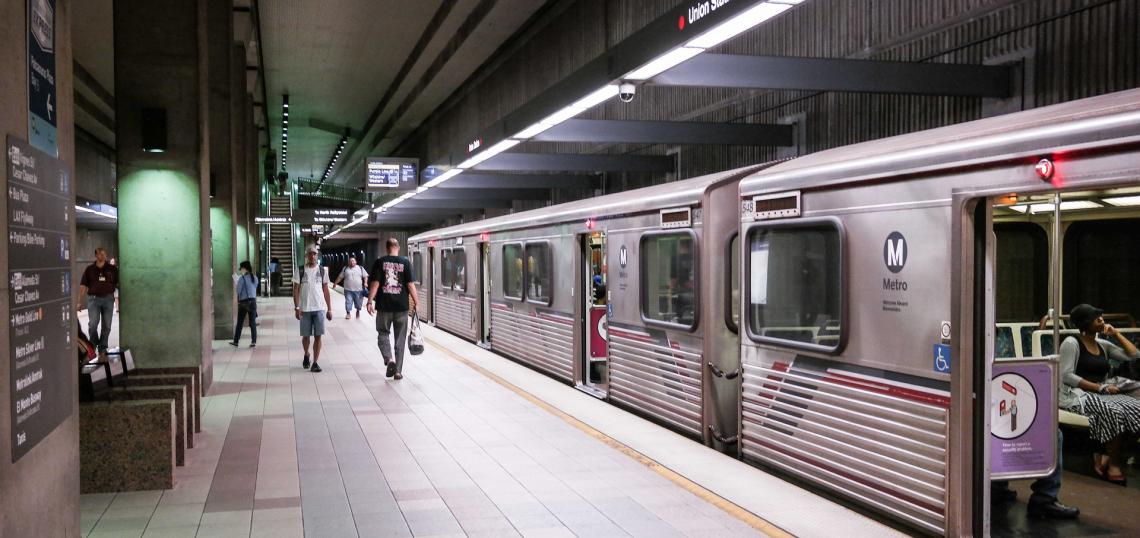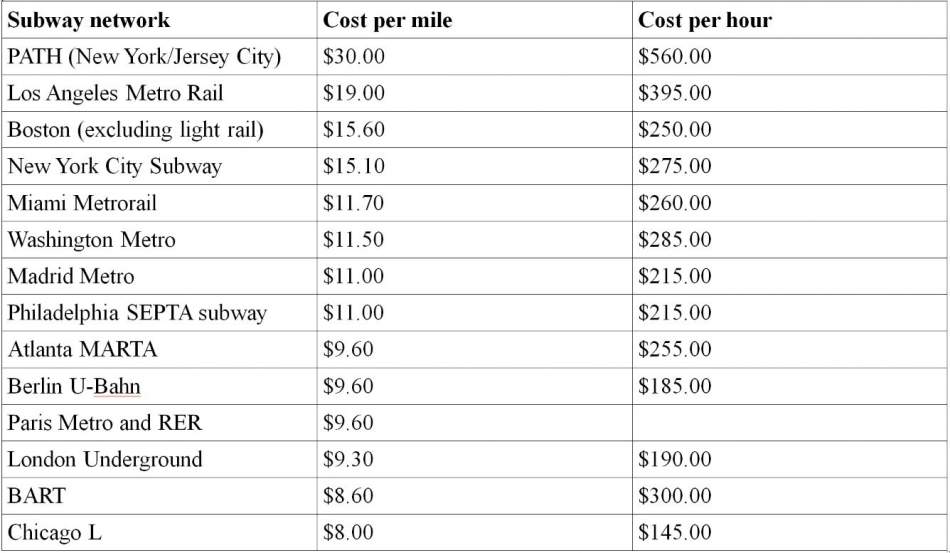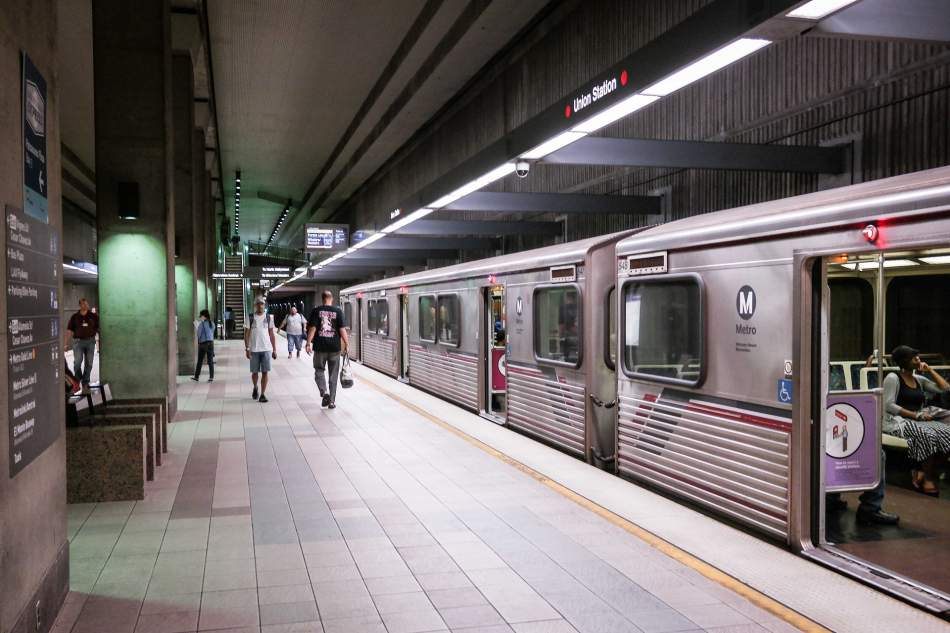Metro systems around the developed world have a wide range of operating costs. The spread appears to be a factor of two, with lower cost European and American systems – such as the London Underground and the Chicago “L” costing about half as much to operate per-mile as higher-cost older systems.
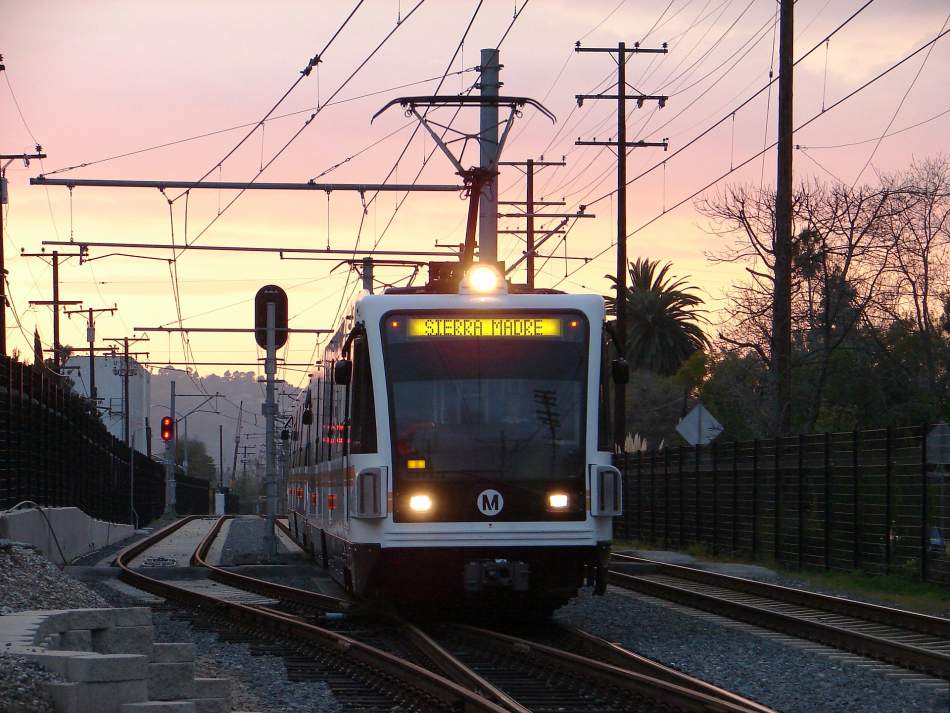
Surprisingly, Los Angeles Metro Rail – at a mere 27 years of age – ranks among the most expensive in the developed world, far ahead of older systems such as the New York Subway and the Boston "T." But unlike New York and Boston – which have extensive legacy infrastructure to maintain – it’s hard to explain why costs in Los Angeles are so high. Something is clearly wrong, but it’s not obvious exactly what.
To compare Los Angeles with systems across the United States and Europe, we start with data from the National Transit Database, which maintains statistics on the top fifty agencies in the United States. This data can then be compared with additional information from the Community of Metros, which tracks systems in Europe.
The data from these two sources is presented as operating expenses per car-mile (or on CoMET, per car-kilometer): this means that a six-car train traveling ten miles counts as sixty car-miles. Many costs, including energy and train maintenance, scale with the number of cars in service, and not with the number of trains. Citing costs per car-mile also means that subway networks with more crowded trains do not appear more efficient simply by packing more people into a smaller number of vehicles.
On this metric—cost per car-mile—Los Angeles is the most expensive subway system in the United States, about twice as costly as the biggest European networks.A related metric is cost-per-hour. Faster subway networks should have lower costs-per-mile and higher costs-per-hour, since some maintenance costs scale with travel time and not distance. These statistics are illustrated for a handful of Metro systems in the United States and Europe below.
Note: There is no data for Paris, since there is no public data for the systemwide average speed of the Metro and the RER commuter trains, but it is likely to be similar to that of the Berlin U-Bahn.
Overall, faster systems tend to have lower operating costs per mile, but not per hour. This includes BART, the Washington Metro, and MARTA, all of which were built in the 1960s and 1970s and extend into the suburbs, unlike older subways in Boston, New York, Philadelphia, and Chicago. However, most of these systems cost $250-300 per car-hour to operate, and some cost less, especially Chicago. Los Angeles is an outlier in the other direction. The only more expensive system in the United States, PATH, is run by the Port Authority of New York and New Jersey, which is infamous for scandal and mismanagement (Matt Yglesias even proposed disbanding the agency). Apart from that one special case, Los Angeles performs the worst by a large margin.
There are several possible explanations for Metro Rail's inefficiency, but none seems satisfactory. The MTA runs infrequent service: for example, each Red Line branch runs every 10 minutes at peak hours and every 12 minutes during off-peak hours. This means that fixed costs, such as track maintenance, are spread over less service than in cities with high frequency service (for example, in Paris peak frequency is every two minutes, and off-peak frequency ranges from three-to-seven minutes depending on line and time of day). However, MARTA runs the same low frequency as the Red Line, and on weekends trains run every 20 minutes. BART runs low frequency as well: outside the subway trunk in San Francisco and Downtown Oakland, it splits into long suburban branches, each running every 15 or 20 minutes.
A related issue is system size. It is easier to run cheaply when there is a large subway network with technologically compatible lines, because then different lines can share maintenance and training facilities and spare equipment. Los Angeles has two subway lines and a handful of technologically-incompatible light rail lines, which is inefficient. However, Miami has just one line, and MARTA has two lines with branches. Moreover, while the largest European metro networks all have low costs, the largest American one - New York - does not.
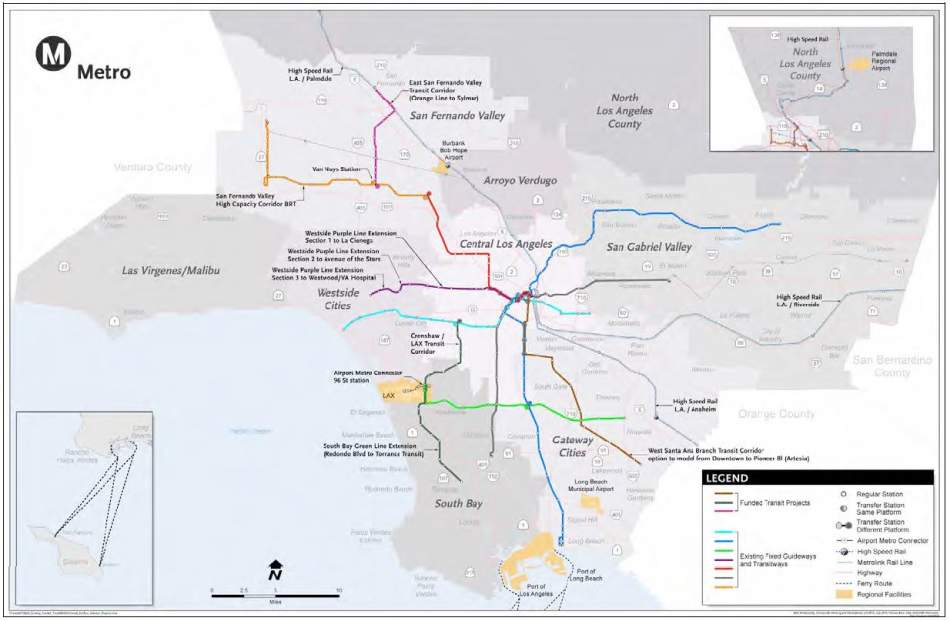
In the future, Los Angeles will open more subway and light rail lines, and perhaps run them more frequently if there is more demand - particularly along Wilshire Boulevard. This is likely to reduce fixed costs, making the system run more efficiently. But at least from looking at the comparison of American and European operating costs, this cannot be a dominant factor. Los Angeles should expand its rail network and expect to see lower operating costs, but expansion alone is likely to only reduce costs to a small extent. Something different needs to happen if Los Angeles wishes to be as efficient as London, Paris, and Berlin.
Another potential explanation is high labor costs. This, again, doesn't explain the differences with cities with higher wages than Los Angeles, such as New York and San Francisco. Per the NTD data, the MTA spends $108,000 annually on wages and benefits for each full-time employeethe same as at the Chicago Transit Authority, and much less than New York City Transit's $140,000 per employee.
Since salaries in Los Angeles are the same as in Chicago, where urban rail operating costs are less than half as high, there must be substantial labor inefficiency. But it is not clear where it is. While some subways, including those of New York and Toronto and a few lines in Tokyo, still run trains with conductors, the Metro Rail only has one crew member on board each train: a train operator. There are 483 train operators employed by the MTA, each spending perhaps 550 annual hours driving a revenue train. This is less outrageous than it seems: 550 is also the average in New York, and in London the average is 720. This explains some of the cost difference, but not enough of it.
Without any clear source of inefficiency, it is on the MTA to do an internal investigation. The biggest subway networks in the world dialogue with one another about adopting best industry practices and using frameworks such as CoMET. The New York-based thinktank TransitCenter has been instrumental at disseminating best practices within the United States and importing some from other English-speaking countries, especially from the London Underground. The MTA needs to proactively seek advice from peer agencies and understand what it is doing wrong, so that it can allocate the money it is currently wasting to better rail and bus service.
Alon grew up in Tel Aviv and Singapore. He has blogged at Pedestrian Observations since 2011, covering public transit, urbanism, and development. Now based in Paris, he writes for a variety of publications, including New York YIMBY, Streetsblog, Voice of San Diego, Railway Gazette, the Bay City Beacon, the DC Policy Center, and Urbanize LA. You can find him on Twitter @alon_levy.




